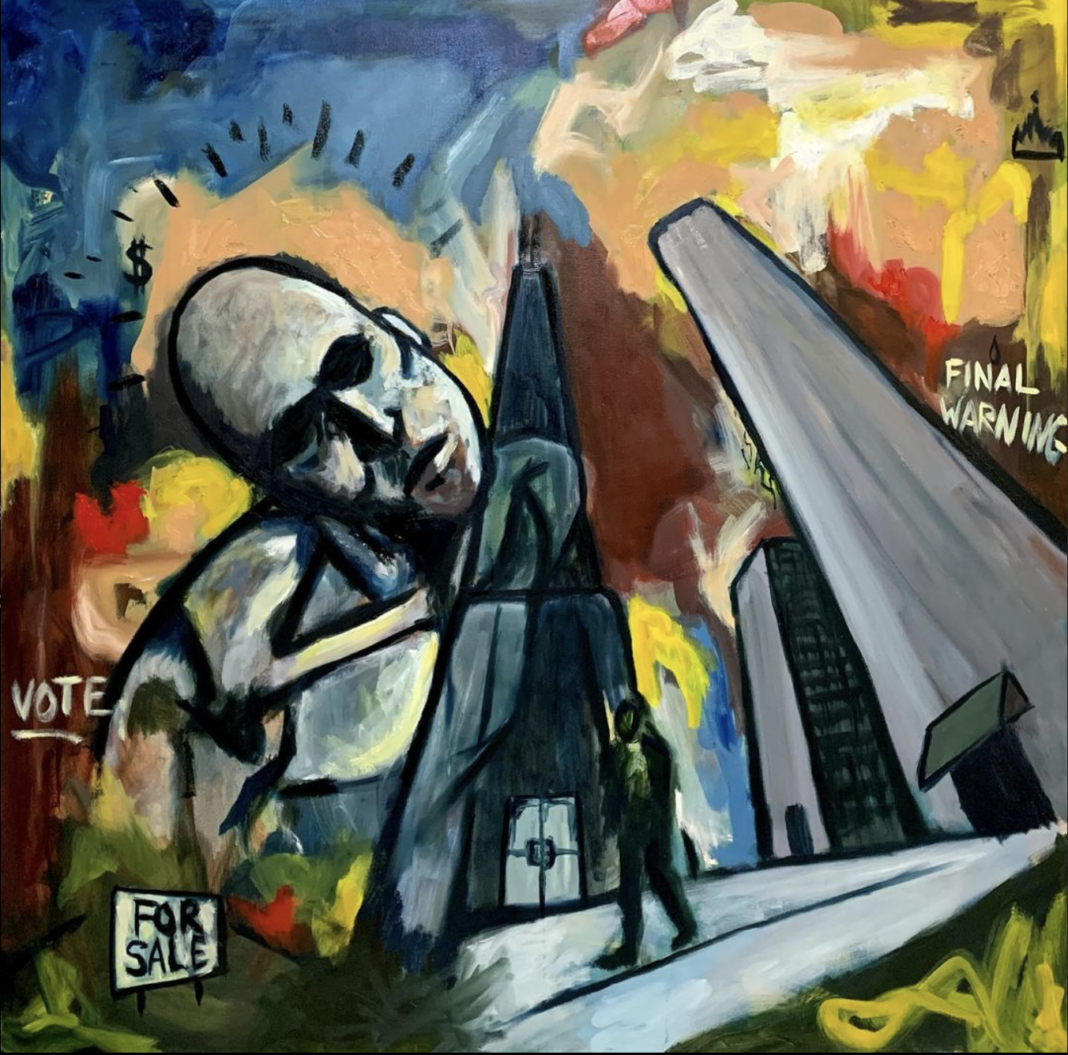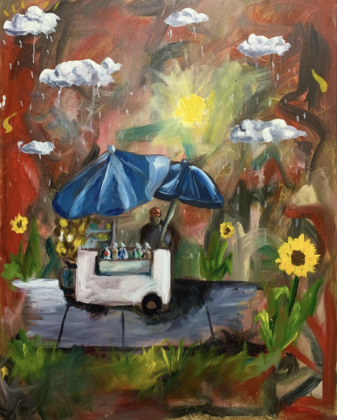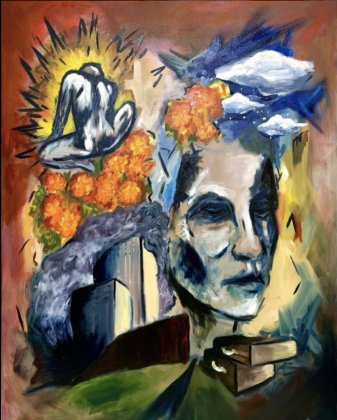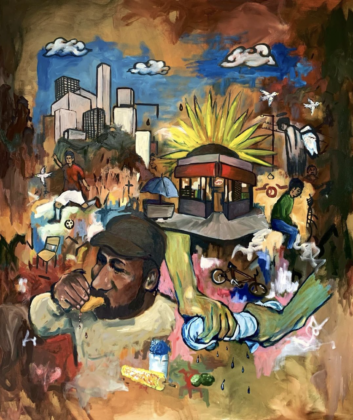The following article is an interview of Chicago based artist Sebastian Silverio. This interview is part of a series where our youth column focuses on young creatives of color.
Ada Marys Lorenzana: Where are you and your family from?
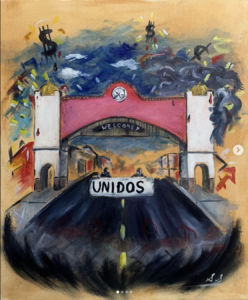
Oil on canvas
16x20in
2020
With gentrification affecting everyone in the community, I want it to be known that we stand together and we’re not for sale. This is our home and the community is here to stay.
Sebastian Silverio: My parents are originally from the state of Morelos [Mexico]. After getting married, they moved to Chicago in 1991. My siblings and I were all born in Chicago and were raised in the Little Village neighborhood. My dad worked in construction and my mom worked from home so we spent a lot of time together exploring Chicago and our own neighborhood.
AL: What inspires you the most to create art?
SS: The art of storytelling is what really inspires my work. My work serves as a form of autobiography and I really enjoy being able to tell my own story through art. As a child, I always loved to draw and was fascinated at being able to create something from my own imagination. I pursued that passion and it led me to create much more personal work. I was no longer just drawing cartoons I liked, but I was telling stories about myself and other people like me. Now as an adult I continue to tell these stories and give platforms to different ideas revolving around community, social justice, and the Chicago experience.
AL: What role do you think art plays in activism?
SS: Art has always played a big role in activism. Not only can it serve as a call to action, but also as an informative medium. For example, I used my piece #HellNoHilco to bring awareness to the factory demolition that covered Little Village in a dust cloud in 2020 right at the start of the COVID-19 pandemic. I didn’t expect a particular response from people after making the piece, but I needed people to just know what happened.
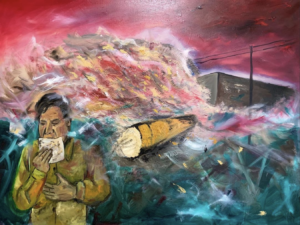
48x36in
Oil on Canvas
2020
This piece was a response to the factory demolition leaving Little Village covered in dust.
AL: What do you hope people take away from your art?
SS: I want people to see my work and feel like they have a better understanding of me and my community. While some work can involve heavy subject matter, I want people to also appreciate the beauty of Little Village and the people that come from that neighborhood. I think a lot of artists make art in the first place to feel like they’re being understood. Kerry James Marshall has a really good quote I like in which he says that he doesn’t really view his paintings as self-expression, but as giving a platform to an idea. That really resonated with me because while my work is somewhat autobiographical, my main goal is to bring ideas forward and show that this work is a lot bigger than me.
AL: Anything else you’d like people to know?
SS: While it may seem like I have a pretty well established body of work, I still feel like I’m only getting started and I’m figuring it all out. I want people to know that artists really don’t have it all figured out, despite what it may seem like. There’s constant trial and error along with doubt and imposter syndrome. But community support is such a reassuring thing, and I love being able to share my work with the world.
El Tribuno del Pueblo brings you articles written by individuals or organizations, along with our own reporting. Bylined articles reflect the views of the authors. Unsigned articles reflect the views of the editorial board. Please credit the source when sharing: tribunodelpueblo.org. We’re all volunteers, no paid staff. Please donate at http://tribunodelpueblo.org to keep bringing you the voices of the movement because no human being is illegal.

